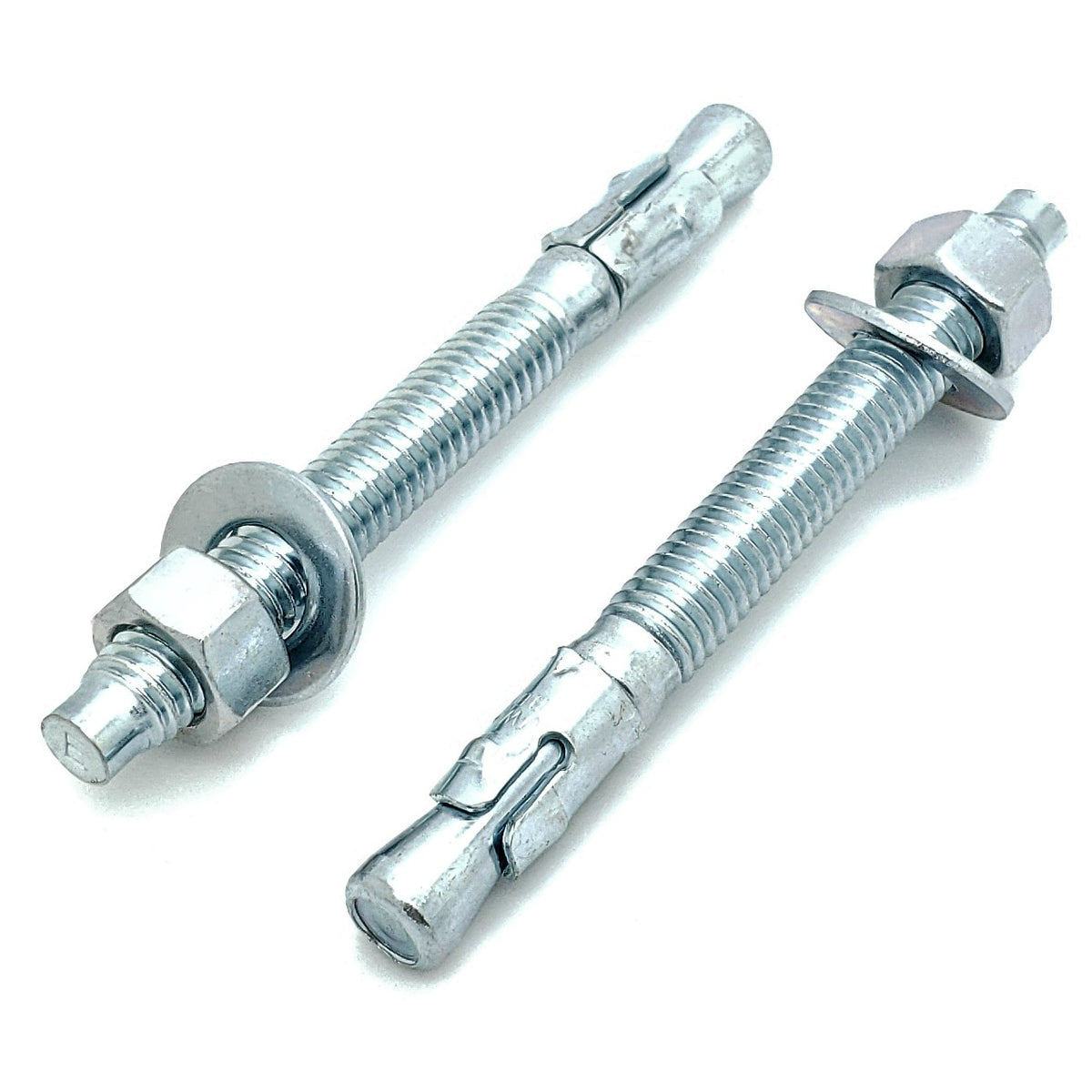The chemical anchors are the right choice for anything !
A single 10 (12 mm?) mm steel stud is good for about 1-2000 kg(f) of pull force vertically from a hollow-block roof.
Using iirc a 16 mm hole and the right plastic thingy with the holes and the manufacturers goop.
I know that 200 kg loads hanging from a single bolt had zero movement and felt solid with jerk tests.
The manufacturer specs, as best as I recall, 1200 kgf for hollow blocks like roofs.
Any reputable manufacturer should serve you well, hilti, fischer, etc.
You can always try one, by hanging a load of steel stuff from a chain, supported by a hydraulic jack, and then lower the jack.
Industrial rules say that anything you work underneath and might cause death, or anything over 3-x m in height, must have a proof load or rated load of 10x the mass You want to hang.
I once built an amusement park ride .. the industrial inspector who came to certify it passed it first time -- but had already advised me on what to do or not do.
Basically, proving with a test load of 10x rated load, the structure is deemed "safe".
It essentially means You cannot be *
successfully* sued if something goes wrong.
In practice I try to use 2 sizes bigger bolts for anything important, like anchoring the very expensive 80k demo sauna to the concrete platter.
Chemical anchors.
8 mm bolts would have been more than enough, but I used 12 mm 316L rods (special ordered), 4 per plate, 6 plates (200x200x20 mm), total 24 anchors.
Where the cost of the anchors was immaterial, relatively, perhaps 150 € +/- with maybe 5 tubes of adhesive, and the 80.000 € demo sauna needs to both be well built and also seem and look to be be installed in a superior manner ...
The 316L tie rods were not actually needed, but will never rust, here next to the sea, it´s a proof of how I build and make *expensive* things for those who want some and can afford them.
Likewise all bolts are special ordered from finland, double-dip hot galvanised, torx T20 / T30, and last forever with the siberian pine "siperian lehtikuusi" which is really dense, heavy, 400kg/m3, infused with resin and lasts 30 years++ outdoors even without paint.
Standard bolts/screws will fail inside the special wood within a few years, and will not be able to be extracted.
The resin corrodes them.
The saunas are made by salvos,
www.salvos.fi, and I then do everything else, water, electrics, waste, showers, permits, install, import, unload whatever.
The sauna kit costs about 1/4-1/3 of the total project cost, for a massive, heavy, 130 mm thick large-beam setup, with laminated tempered multi-layer windows of 200 x 200 cm, with mirror coating.
I explain to clients that this sauna is really expensive -- day 0.
But
whatever You spend, the value of Your house goes up by 2x of what You put in with salvos and me.
Endless discount options exist -- and workarounds for not putting in proper electric sub-panels, wastewater, showers, whatever.
But doing that the value of Your (expensive) house does not go up at all.
And I will not be involved in the process .. at all.
You DO get to use the discount sauna, and some are actually ok for use.
Since You ideally and legally mandated will put in the wastewater, showers, waterlines, electrics, permits, foundations, etc. saving pennies on structural stuff that needs to live for decades and pass a building codes review when You sell / appraise the thing - is less than optimal - for a big house of high value.
All my potential clients are in this bracket.
They prefer a superior product made in Finland, with a superior installation and fit/finish, with a price commensurate with that.
The sauna kit as such is quite cheap - starting around 14-16.000 € ...
Add size, 1000€, windows, 1400€, bigger beams, 1500€, transport - 6000 €, unload 3000€, electrics, 3000€, water 3000€, waste 3000€, install 8000€, fit/finish with fiber optic lights & paint inside (special wax) and out, 10.000 € ...
And "stuff" as a category for about 4000€.
Stuff always happens. Having the client know about in advance, is better, imho, ime.
I tell potential clients which of these options they would prefer I not do - so they can do themselves.
And why a,b,c is so costly especially fit and finish - endless hours of finicky work.





